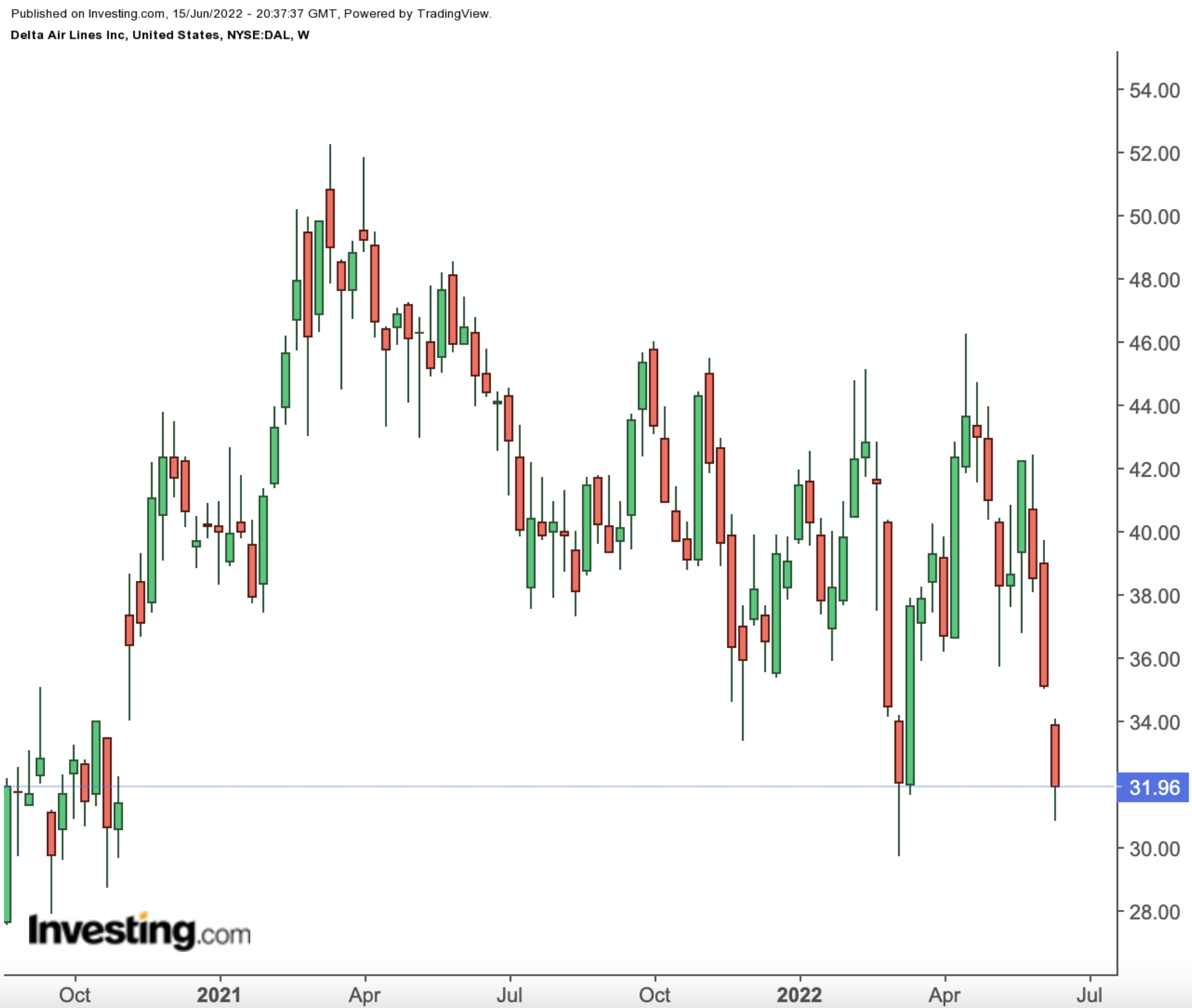- The US Global Jets ETF is down 18% this year
- What’s overshadowing otherwise upbeat travel demand are fuel costs and a decrease in flying capacity
- The next stage of growth for airlines, which will depend on the revival of business travel, is still facing an array of uncertainties
-
If you’re interested in upgrading your search for new investing ideas, check out InvestingPro+
After enduring a painful slump during the COVID-19 pandemic, the US airline industry was counting on travel this summer to reclaim the long-lost, upward trajectory of its stock prices. Unfortunately, the current macroeconomic environment appears to be putting a damper on those plans.
Surging inflation, higher fuel costs, and risks of a recession are some of the industry’s main headwinds, keeping airline share prices depressed. As a result, the U.S. Global Jets ETF (NYSE:JETS), which includes the largest US airlines, is down 19% this year.
Weakness in the sector’s outlook comes even as ticket sales begin to recover in the face of increased leisure travel demand, primarily due to the end of pandemic-related travel restrictions.

American Airlines (NASDAQ:AAL) expects revenue to balloon well above its original expectations this quarter as consumers swarm back to travel following the pandemic. Total revenue will jump by as much as 13% over the same period of 2019. That compares with the carrier’s original outlook for an increase of 6% to 8%.
Delta Air Lines (NYSE:DAL) also expects strong demand with its adjusted total revenue, reaching 100% of 2019 levels.

That is a better-than-expected outlook, as the company previously foresaw figures reaching only between 93% and 97% of pre-pandemic activity.
Nevertheless, this robust recovery in sales has failed to propel share prices of both AAL and DAL, which are down 18.2% and 25.9% this year.
What’s overshadowing an otherwise upbeat forecast are fuel costs and a decrease in flying capacity. For Delta, costs for each seat flown a mile—an industry gauge of efficiency—will be up as much as 22% this quarter compared to 2019 levels.
Against this backdrop, analysts don’t expect airline stocks to recover from this slump in the next 12 months as the industry contends with the impact of a cost-of-living crisis, surging oil prices, and COVID-19 lockdowns in China.
Analysts at Stifel said they expect a bumper summer for the airline industry followed by a disappointing fall and winter. According to their note, by that time, the pent-up demand unleashed by the removal of coronavirus curbs will have dissipated, and inflation will have settled into the minds and wallets of consumers.
Along with higher costs, there are additional operational hurdles impacting airlines. Almost all US carriers have cut their initial second-quarter capacity plans, with some trimming those metrics into the third quarter, as they’ve struggled to balance surging demand with operational challenges, including shortages of both pilots and workers.
And there’s more: the next stage of growth for airlines, which will depend on the revival of business travel, faces an array of uncertainties, including a potential recession, new COVID variants, and escalating geopolitical risks after the Russian-Ukraine war. In addition, businesses are unlikely to resume staff travel when many employees continue to work remotely, and managers are looking to cut costs.
Bottom Line
Despite a rebound in air travel, we believe that airline stocks are not a compelling play for long-term investors. These carriers face numerous challenges, including higher fuel costs, a global recession, and a cut-throat competitive environment.
***
Looking to get up to speed on your next idea? With InvestingPro+ you can find
- Any company’s financials for the last 10 years
- Financial health scores for profitability, growth, and more
- A fair value calculated from dozens of financial models
- Quick comparison to the company’s peers
- Fundamental and performance charts
And a lot more. Get all the key data fast so you can make an informed decision, with InvestingPro+. Learn More »
